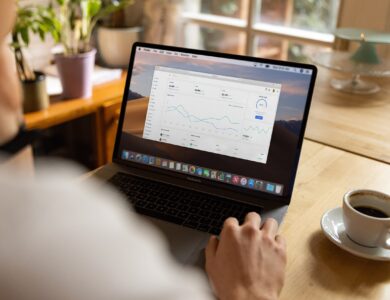What is a Marketing Funnel, How Many Stages Does It Have, and What’s the Overall Workflow?

Introduction
Any person involved in any type of modern digital marketing should know how to guide a prospect through all the steps from an initial contact point to the last stage of purchase. One concept defining this journey is that of a marketing funnel—a model designed to help businesses think of the process of turning leads into customers. But what exactly is a marketing funnel, and how actually does it work?
What Is a Marketing Funnel?
A marketing funnel is the representation of customers’ journeys from their first acquaintance with a brand to the final purchasing decision. It gets the name “funnel” because it’s wide at the top—where you’ll attract a large number of potential customers—and actually narrows down as only a few of those leads convert to paying customers.
2.1 Understanding Funnel Shape
Imagine pouring sand through a funnel. It is wide at the top and then gradually tapers down. That is a customer journey shape: wide at the top, with awareness, slowly filtering down to a choice. At every subsequent stage in the cycle, there are fewer customers left. This gives marketers an idea of how to strategically target customers at different buying journey points.
Why You Need a Marketing Funnel
Otherwise, your efforts might start feeling a lot like trying to fish with a leaky net: scattered, inefficient, and by the end of the day, frankly, not all that productive. A well-defined funnel brings focus to any marketing strategies and makes sure that you have the right message at the right time—which gets you moving from hoping for sales to drive with intention.
Stages of the Marketing Funnel
The marketing funnels could be divided into three major stages: top, middle, and bottom. Each of these steps is an absolutely different phase of the customer journey and hence has to use a different approach to push the leads through.
4.1 Top of the Funnel: Awareness
On the very top of the funnel, you’re really concerned with generating awareness. This is how your customers are introduced to your brand— maybe through a blog post, on social media, or via an ad. You want to teach and tell them at this stage about what they’re having problems with, and how your product can fix it.
4.2 Middle of the Funnel: Consideration
This is when the prospect becomes brand aware and moves to a stage where they consider their options and decide whether your product or service is the right one for them. Kinds of content—case studies, webinars, or product comparisons—really do well in this mid-stage and nurture those leads with information rich in detail.
4.3 Bottom of the Funnel: Decision
In this funnel stage, the lead does his homework and later decides whether to buy your product or not. This requires a strong call to action that will ensure the final conversion from customers; it may be in the form of limited-period offers, free trials, or direct consultations, which give an incentive for the final conversion.
How Does a Marketing Funnel Work?
A marketing funnel works by guiding prospects through systematic steps: awareness, consideration, and lastly, the decision stage. Each of these stages requires various tactics aimed at engaging customers and then making them pay buyers. It is therefore important to know how such stages link in order to allow for a smooth customer experience.
5.1 Lead Generation
A lead is generated from potential customers who may have interest in your business offering. The idea is to engage them with something of value. Here, the key is to give away something valuable that’s going to attract people and encourage them to give you their contact information, like a free ebook, newsletter subscription, or webinar registration.
5.2 Lead Nurturing
Now that you’ve captured a lead, what would come next in line would be nurturing. Basically, it means continuing to engage with your lead by giving them relevant content under the umbrella of their needs or pain points. It’s how email marketing, personalization of content, and retargeting ads help in nurturing leads through the middle of the funnel and maintaining top-of-mind awareness as they progress closer toward a purchase decision.
5.3 Conversion to Sales
Finally, as leads hit the bottom of your funnel, what your campaign aim starts to become is converting clients to paying customers. You throw the kitchen sink at them, from exclusive discounts to tailored consultation or time-bound offers that create urgency. What you are interested in is the act of making a decision as easy and palatable as possible to execute.
Tools to Build and Optimize Your Marketing Funnel
Any marketing funnel is as good as the tools used in its construction and optimization. It is using the right tools that will create huge differences at all stages of your funnel success, from capturing leads to analyzing performance.
6.1 CRM Systems
Any business dealing with a large number of customers would necessarily need to have customer relationship management systems. These platforms help in keeping up contacts, segmenting an audience, and personalizing activities to make sure that you are passing the right message to your leads at the right time.
6.2 Email Marketing Tools
Email marketing is indeed one of the very potent ways to nurture leads. Tools like Mailchimp or ConvertKit allow marketing automation for email campaigns, segmentation, and even engaging with your audience. This will ensure that your leads receive personalized content to keep them moving down the funnel.
6.3 Analytics Tools
You need analytics tools to trace performance back up the marketing funnel. They will let you know what is working and what isn’t in your funnels so data-driven decisions can be made.
Real-life Examples of Effective Marketing Funnels
Actually seeing a marketing funnel in action really may drive home the point of how to apply these principles in your business. Let’s take a look at a few examples of companies that have really mastered their funnels.
Common Mistakes in Marketing Funnels
The best-laid schemes o’ mice an’ men / Gang aft agley. Many businesses are making the same mistakes in their marketing funnels—mistakes that cost them leads and opportunities. Knowing the mistakes helps you avoid them and keeps your funnel running at optimum capacity.
Optimizing Your Marketing Funnel for Maximum Results
This will help in optimizing your marketing funnels to get good results. One of the most important things to have a successful marketing funnel is its continuous optimization; that is, it’s very important to check and fiddle with every stage many times so that conversion rates can be maximally optimized and the funnels are always performing at their best.
Conclusion
Obviously, an understanding of the marketing funnel and how to manage it from problem awareness to a decision is very critical in guiding potential customers through their buying journey. Effective management at every phase of the funnel—from awareness to decision—may increase the chances of changing leads into old and loyal customers. A well-optimized funnel is the one that is helping you create positive experiences for your customers. Seamless and positive experiences for clients are not about getting more sales.
Frequently Asked Questions (FAQs)
When is the best time to start using a marketing funnel in my business?
Yesterday! The sooner you get the marketing funnel in place, the faster you can map out the prospect’s customer buying journey.
How often should I go through the process of reviewing and optimizing my marketing funnel?
As often as possible. Depending on your business size and activities, you will want to check over your funnel each month or quarter to be sure that you’re staying on top of changes that are required.
What’s gonna fill my funnel at the top?
Content marketing, social media engagement, and paid advertising are key. The focus is on providing valuable content that resonates with your audience.
How do I know if my marketing funnel is working?
Analytics tools can help you peer inside what’s happening at each stage of the funnel. Other metrics that would let you know whether your funnel is working include conversion rate, the number of leads generated, or overall return on investment.
Can I use a marketing funnel for B2B sales?
Yes, you absolutely can. Marketing funnels can work for both B2C and B2B sales. It all depends on how you adapt according to the nature and behaviors targeted in your audience.



